Free shipping to all orders over $100 US
Protect Your Hearing. Reduce the Noise.
Indulge in your passion for all things loud. Explore our cutting-edge hearing protection designed to protect and preserve the sense of hearing in our fast-paced world.
Your Ears Rock® is a hearing conservation company dedicated to reducing the incidence of noise-induced hearing loss (NIHL) and tinnitus.
Your Ears Rock® accomplishes this by improving accessibility to best-in-class, Made in the USA youth and adult hearing protection products, and evidence-based education, motivation, and training programs for children and adults, in compliance with OSHA Standard 29 CFR 1910.95 when applicable.
Protect and Preserve Your Precious Sense of Hearing. Improve Sleep. Increase Productivity and Concentration at school or work. Comfort Sensory Sensitivities. BE LOUD. BE SAFE.




People of all ages are using Your Ears Rock to protect, preserve, and treat their hearing health, improve concentration, increase productivity, sleep and relaxation, and many other personal safety and wellness benefits.
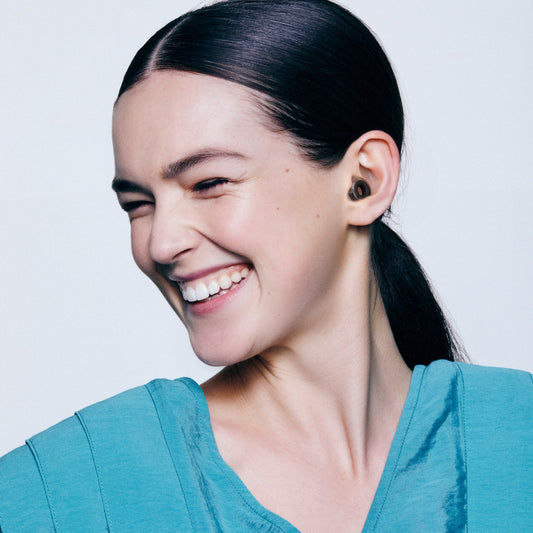
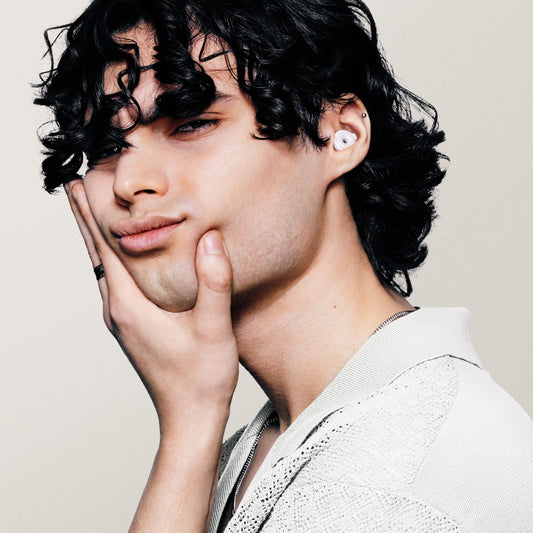
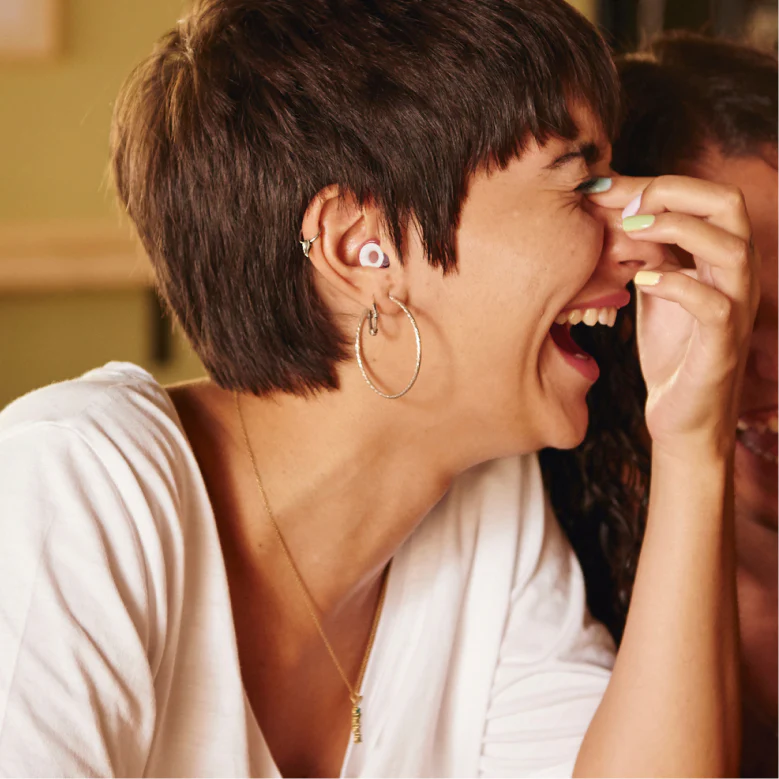
Wellness and safety are integral components to any organization. Make sure you have got it covered with our wide selection of custom branded hearing protection and personal protective equipment (PPE) for children and adults.
Promote your brand, health, wellness, compliance, and safety with custom branded earplugs, earmuffs, educational handouts, earplug keychain containers, hard hats, safety glasses, and more, emblazoned with your colors and logos, MADE IN THE USA.
Protection. Concentration. Relaxation. Sensory Sensitivities. OSHA-compliance. These are a few of the benefits of uniquely custom branded hearing protection for companies, school districts, municipalities, music, sports, live entertainment, special events, conferences, associations, and more.
PROMOTIONAL PRODUCTS WITH A PURPOSE
For all PPAI and SAGE inquiries please email us at sales@yourearsrock.com or call us at 612.900.2100
Renowned speaker and expert in auditory wellness, Your Ears Rock, is dedicated to empowering individuals and organizations in the prevention, preservation, and treatment of noise-induced hearing loss (NIHL) and tinnitus, and OSHA Standard 29 CFR 1910.95 compliance when applicable.
With a wealth of knowledge and a dynamic, experiential teaching style, Your Ears Rock delivers impactful training sessions that blend scientific insights with actionable strategies. Through engaging, evidence-based educational presentations and motivation, Your Ears Rock instills heightened awareness regarding the importance of hearing protection, conservation, and treatment, equipping audiences with the tools to safeguard their auditory health.
Your Ears Rock is a sought-after authority in the field, committed to fostering a culture of hearing preservation that creates a healthier and more vibrant community.
Topics include and are not limited to:
Book Your Ears Rock today for your next conference, lunch and learn, special event, keynote, and more info@yourearsrock.com and 612.900.2100
OSHA Standard 29 CFR 1910.95 Compliance Services include and are not limited to:

Young adults at risk of NIHL

Americans have Tinnitus

People exposed at work on a daily basis

Children 6-17 years old have NIHL

Concentration. Productivity. Studying, Reading. Sensory Sensitivities.

Airplanes. Trains. Automobiles.
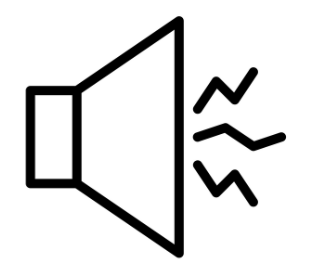
Concerts. Rehearsals. Live Entertainment.
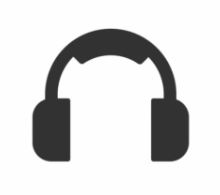
Protect Your Hearing. Reduce the Noise. Be Loud. Be Safe.
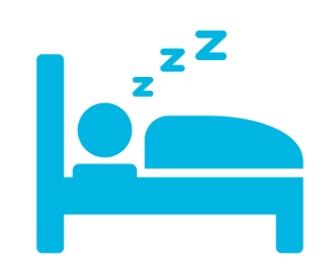
Snoring Spouse or Roommate. Noisy Neighbors. Environmental Noise Pollution.

Occupational. Lawn Equipment. Powertools.
Your Ears Rock regularly contributes to hearing health and personal safety communications that you now have access to. Read up on the latest data and conversations and remember to sign up for our newsletter so you are the first to hear!

The YOUR EARS ROCK® Podcast is the ultimate digital platform for ear-opening conversations featuring global leaders and influencers from diverse industries such as:
This podcast delves into experiences with noise-induced hearing loss (NIHL), tinnitus, and related auditory processing challenges, offering both educational insights and firsthand accounts.
There are four easy ways to protect yourself from Noise-Induced Hearing Loss (NIHL)
Damage can be apparent immediately, or it can gradually become noticeable. Because the majority of hearing impairment comes on gradually, this makes it more difficult to notice that damage has taken place.
The scientific name is cerumen. Wax in the ears is a common and easily treatable cause of deafness, discomfort, and sometimes noises in your ears (tinnitus). The skin cells lining our outer ear canals include tiny glands, similar to sweat glands, which produce wax and acts as a protective layer, which traps dust and other particles which get into the ear. The wax slowly works its way to the outside, taking the trapped dirt and dust with it along with a scent that helps repel insects. Ear wax only causes problems when it builds up, which may be due to overproduction or difficulties in the natural clearance of the wax.
DO NOT clean your ears with a Q-Tip unless it is the outer portion of the ear (Pinna). Arrange to see a professional regarding having your ears washed out on a regular basis.
The symptoms of NIHL that occur over a period of continuous exposure increase gradually. Sounds may become distorted or muffled, and it may be difficult for the person to understand speech. The individual may not be aware of the loss, but it can be detected with a hearing test.
More than 30 million Americans are exposed to hazardous sound levels on a regular basis. Individuals of all ages including children, adolescents, young adults and older people can develop NIHL. Exposure occurs in the workplace, in recreational settings and at home. There is an increasing awareness of the harmful noises in recreational activities, such as, concerts, sporting events, target shooting or hunting, snowmobiles, lawnmowers, go-carts, woodworking and other hobby equipment. Harmful noises at home may come from vacuum cleaners, garbage disposals, lawn mowers, leaf blowers and shop tools. People who live in either urban or rural settings may be exposed to noisy devices on a daily basis. Of the 28 million Americans who have some degree of hearing loss, about one-third have been affected, at least in part, by noise.
Noise-induced hearing loss is in most cases preventable. All individuals should understand the hazards of noise and how to practice good health in everyday life.
Scientists focusing their research on the mechanisms causing NIHL hope to understand more fully the internal workings of the ear, that will result in better prevention and treatment strategies. For example, scientists have discovered that damage to the structure of the hair bundle of the hair cell is related to temporary and permanent loss of hearing. They have found that when the hair bundle is exposed to prolonged periods of damaging sound, the basic structure of the hair bundle is destroyed and the important connections among hair cells are disrupted which directly lead to hearing loss.
Other studies are investigating potential drug therapies that may provide insight into the mechanisms of NIHL. For example, scientists studying altered blood flow in the cochlea are seeking the effect on the hair cells. They have shown reduced cochlear blood flow following exposure to noise. Further research has shown that a drug that promotes blood flow used for treatment of peripheral vascular disease (any abnormal condition in blood vessels outside the heart), maintains circulation in the cochlea during exposure to noise. These findings may lead to the development of treatment strategies to reduce NIHL.
Continuing efforts will provide opportunities that can aid research on noise-induced hearing loss as well as other diseases and disorders that cause hearing loss. Research is the way to develop new, more effective methods to prevent, diagnose, treat and eventually eliminate these diseases and disorders and improve the health and quality of life for all Americans.
These are good questions! All of us start out life with a full set of tiny sensors in the inner ear called “hair cells”. They are so small that they can only be seen with a very high powered microscope. The hair cells are spread across a long membrane in the cochlea (inner ear) like the keys on a piano… low frequencies at one end and high frequencies at the other. We all start losing hair cells from the time we are born. They tend to die from the high frequency end first. This progresses very slowly throughout our lives and becomes noticeable in our late 50′s and early 60′s in most people.
One thing that seems to speed up that process is exposure to loud noise. Loud bursts of noise (like a dragster blasting off from the starting line) or prolonged noise (like working in a moderately noisy factory for years) can have the exact same effect. There is no evidence that a child will be more or less vulnerable to noise exposure than an adult. The fact is that BOTH are going to get damage from loud sounds. The only thing is that a toddler has more to lose because they are so much earlier on in the natural process of losing hair cells.
It is recommended that you get a pair of earmuffs for yourself and for the child. Toddler’s heads are almost adult size by the time they are a year old, so most earmuffs will work fine. Simply put them on your child when you anticipate a blast of hazardous sound and take them off when you don’t. This will reduce the total cumulative noise exposure and protect those thousands of little hair cells. It will also set a good example for the child and for the other people attending the concert or sporting event. They can learn that you can have a great time and protect your important sense of hearing at the same time.
He’s right. Hunting requires listening and protection during the same exercise. He not only needs to hear his father, he probably wants to listen to the surrounding sounds. He needs good hearing function with “on-demand” maximum protection. Regular earplugs will probably give him reasonable protection when worn properly but not give him enough functional hearing. Musician’s ear plugs would give him his choice of how much attenuation he would like (so he could communicate) but the protection would be inadequate for gunfire. There is a third option developed especially for hunting. Electronic hearing ear muff type protectors allow the user to hear low-moderate level sounds, but are protected from dangerous levels by sound triggered attenuation circuits. Some systems provide increased attenuation as sound levels increase.
Damage to hearing is caused by sounds that are too loud, regardless of their frequency. Damage from sound is determined by the loudness of the sound and also by the duration of exposure to the sound. Brief exposure to an 85 dB sound (such as a blender) is O.K. However, prolonged continuous exposure (8 or more hours) to the same sound could damage hearing. Some sounds (such as gunfire or standing next to a helicopter) are so loud (120-160 dB), that any brief exposure to them without wearing earmuffs or earplugs can damage hearing. (This means that the dog whistles are at a very high frequency but that they do not move the air enough to damage the inner ear hair cells.
Read about the history of bels and decibels (a decibel is one-tenth of a bel):
The decibel level and time of exposure are the most important considerations, referred to as our exchange rate. Some sounds — such as gunfire, explosions, etc. — are so loud (140 or more decibels), that ANY brief exposure to them at close range can cause permanent damage and hearing loss. Sounds at 100 decibels (such as loud music through stereo headphones) will take a while longer to cause permanent damage to hair cells in the cochlea. The frequency of the sound is less important than its decibel level and time of exposure.
They are safe for all ages as long as they are not too loud for too long.
Generally Personal Entertainment Device players including tablets and smartphones can be turned up to a maximum far exceeding 105dB iPhone earphones. It is instructive to note at this level and above hearing damage can occur in as little as four minutes.
The output levels across brands of models tests are about the same, especially in the high decibel level – Only recently have Apple and Android started providing volume limited software.
No – it depends on how loud you set the volume and for how long you listen to that volume.
A rule of thumb is if you can not understand someone talking to you in a normal speaking voice when they are an arm’s length away… it is too loud. This rule works with standard earbuds and headphones. If you are using noise-canceling headphones, see the following rule of thumb.
A conservative rule of thumb reflects no more than 60 minutes at the 60% volume.
It is the decibel level that reaches the ears and how long it is listened to that are the issues. No matter what the sound source is, if that sound is 85dB or more, there are limits to how long a person (any person) can safely listen to it.
A unit used to measure the intensity of a sound.
Most people reach the age of 50 without any hearing problems, but others suffer a very slow and gradual hearing loss that may not be noticed for years. Certainly working in a noisy industry is one such cause. And listening to loud music is another. The ear is made up of three parts—the outer ear, the middle ear, and you guessed it, the inner ear. The inner ear is about the size of a small fingernail and contains about 15,500 nerve endings, called hair cells. When some of these hair cells are damaged, you have permanent hearing loss. Damage to the outer and middle ears is usually temporary and can be treated by a doctor.
Other than hearing loss associated with aging (Presbycusis), the most prevalent cause is working around noise and recreational activities. The ear does not know the difference between loud noise and loud music. To the ear, noise and music are just vibrations in the air. Rarely, a person may suffer a permanent hearing loss from a virus or even a brain tumor. These usually have a sudden onset and may be accompanied by dizziness. Hearing loss from noise or music tends to be gradual in nature with no dizziness.
Only hearing losses that are from the middle ear (where kids get ear infections) or from the outer ear (such as wax occlusion) can be treated. Rarely can a hearing loss be treated if it is from the inner ear. The inner ear is actually in the brain, so inner ear surgery is brain surgery. Having said this, researchers are working on a “vaccination” that can be given to reverse inner ear hearing loss.
The ringing is called tinnitus, Latin for ringing. Actually, tinnitus refers to any noise that is heard in the head, that does not come from the outside. Tinnitus comes in two flavors—objective and subjective. Objective tinnitus is tinnitus that can be heard by other people. This is very rare, and is usually related to blood vessel problems in the ear. Subjective tinnitus is much more common and refers to the type of tinnitus that only the person can hear. But, to answer your question: You are probably suffering from TTS from the concert.
This is a fancy way of saying temporary hearing loss. After a loud concert or sporting event, your hearing is temporarily reduced. After about 16 to 18 hours, this resolves and your hearing should return to the level it was before (hopefully normal). Often the hearing is reduced, there is frequent tinnitus, which is especially noticed in quiet places such as when you are trying to sleep. The tinnitus and hearing loss (sometimes felt as a numbness in your ears) should completely resolve after 16 hours.
The short answer is “yes” and “no”. It is true that the ear recovers after about 16 hours and can take on new challenges of loud music, but TTS is a warning signal of being exposed to too much music. If you go to a concert or Friday night do not mow your lawn until Sunday. However, once you have a music related (or noise related) hearing loss, it is permanent, so do whatever it takes to prevent it. Certainly moderation is one idea. Enjoy that loud song, but when it is over, turn down the volume a bit to give your ears a rest.
Hearing loss comes with two other things that can be very annoying—or if you are a musician, career ending. They are pitch perception problems and permanent tinnitus. Pitch perception problems, as the name suggests, means that a person with a significant hearing loss may hear one note as another (and have limited understanding for speech). And can you imagine having a constant hum or whistle in your head day and night? This is what many people report with permanent tinnitus. So,…prevention of hearing loss is where it is at because YOUR EARS ROCK
Although this is uncommon, it does occur on occasion. There is almost always a hearing loss associated with tinnitus. Using a small hearing aid not only will help you hear better, it tends to mask or block out the tinnitus in the majority of people. Being overly concerned about it is another problem. The last thing someone should do is become stressed as this may make the tinnitus more noticeable. There are therapy programs that serve to retain the brain to ignore tinnitus and these can be very successful. Contact your local audiologist or doctor if this becomes a problem. Mobile-applications are also now available that allow you to customize tinnitus masking noise.
Believe it or not, but Classical music—or specifically playing classical music –can be more damaging than rock music. Research has shown that about 30% of rock musicians have hearing loss, and about 52% of classical musicians suffer from this problem. The main difference is that classical musicians rehearse, perform, and teach more hours each week than typical rock musicians. And classical musicians tend to be clustered closer together than rock musicians. So even though the peak sound levels in a rock band may be higher than in an orchestra, the total weekly dosage of a classical musician is greater.
Although this next issue is highly variable, many classical musicians do not like their music as much as rock musicians do. T is this liking of the music that is partially responsible for the difference in susceptibility between rock and classical musicians. Research has shown that if you like the music, it is actually less damaging than if you do not like it. Classical or orchestral musicians may play the same piece of music countless times, and become bored with it. In addition, an orchestra musician has their music selected for them by a conductor or artistic director. They may not like the selected pieces. In contrast, a rock musician tends to play their own music—music that they love. This research has been replicated many different ways, always with similar results. So, go ahead and enjoy your music (in moderation and with practicing the four techniques for hearing loss prevention learned throughout the Your Ears Rock program).
That is correct. We are not sure exactly why that happens, however there are two theories. One is that when you are under stress, certain hormones are released in your inner ear that makes it more susceptible to hearing loss. A second theory is related to the fact that there are a series of feedback loops from the brain back to the inner ear. These feedback signals can change the susceptibility of the inner ear to damage. If the music is pleasurable, the feedback from the part of the brain corresponding to hearing, reduces the susceptibility.
The two main factors are how intense the music or noise is, and how long one has been exposed to it. We know from research that prolonged exposure to 85 decibels (dB) or greater, over time will cause a permanent hearing loss. A level of 85 dB is not particularly loud – a dial tone on a telephone is about that. Even though it is not loud, it is intense enough to be damaging, However it also depends on how long you are exposed to it. Research has found that the maximum exposure each week should be less that 85 dB for 40 hours. This is identical to 88 dB for only 20 hours. That is, for each increase of 3 decibels (dB), you can only be exposed for half as long. Saying it differently, for every 3 decibel increase, your exposure doubles. Other less significant factors are your liking of the music, general health, and hereditary factors.
Due to the law of physics, earplugs lessen (attenuate) the sound energy for the higher pitches more than the lower bass notes. Typically earplugs will cause music to sound hollow without much high-end. In the late 1980s, a company named Etymotic Research came out with a “flat” earplug—one that lessens the sound energy for the high-pitched notes as much as for the low bass notes. These use a small acoustic amplifier that puts back many of the high-pitched sounds. Musicians and music listeners then can hear their music unaffected, except that it is at a less-damaging level.
Many drummers use industrial strength earplugs, similar to those used in factories. These earplugs take off a lot of the sound of the high hat cymbal and rim shot of the drum. The drummer needs to hit harder in order to hear properly, with the result of wrist and arm damage. Using proper ear protection will resolve this. Drummers should be using enough ear protection to prevent hearing loss, and enough audibility of the music, so that they will not overplay.
These are called in-the-ear monitors, and they are a form of a modified hearing aid. Musicians use them as their own monitoring system instead of the small “wedge” monitors on the floor of the stage. The wires are connected to the sound amplification system either directly or through a wireless transmitter. The musician can then hear their own music as well as that of the other musicians, but at a safe level. When musicians use in-the-ear monitors, the overall sound level on stage is typically much less than if they were using conventional wedge monitors.
There are some inexpensive changes you can make. Wall coverings and floor coverings are the two easiest things you can do. If there is nothing on the walls, try putting up some heavy drapes. These will absorb many of the undesirable reflections. Also, carpeting will serve the same purpose for those reflections from the floor. A drop ceiling is starting to get a bit expensive however this will also help. You should also be wearing hearing protection such as the ER-15 or ER-25. These will let you hear your music and at a safer level.
These are called baffles and are usually made of Plexiglas or Lucite. All baffles, due to the law of physics, attenuate (or lessen) the intensity of higher pitched sounds more than the lower bass notes. These baffles are designed to lessen the energy for those high-pitched high hat cymbals, and rim shot hits that a drummer may make. This protects the other musicians and helps improve the balance of the music. The low bass thumping sounds from the bass drum are not really affected. The only “trick” with baffles is that they should not extend up above the drummer’s ear because the last thing anyone would want is to cause more hearing loss for the drummer by being forced to hear the music, not only once but twice from the initial sound and the reflection off the back of the baffle.
These are typically used on the seats of violinists and viola players. In many cases, these musicians need to sit in front of the brass or percussion sections, and they serve to lessen the energy from these louder instruments. The only problem with a seat baffle is that it has to be within 7 inches of the violinist’s ear. If it is further away, there is minimal benefit because of the reflections off the floor, ceiling, and music stands.
There is an acoustic reason for this. The lip of the stage in front of the band or orchestra acts as an acoustic mirror. The higher pitched sounds of the band not only come off the stage to the audience but also reflect off the lip of the stage, thereby enhancing the higher pitched sounds. The band members do not have to play as loud up on stage in order for the people in the audience to hear it better because they are performing at a safer level.
Many percussionists hum and grunt. There is a small muscle in the middle ear that Mother Nature gave us so that our own voice would not be too loud to ourselves (called the stapedial muscle). It has been shown that if one hums or grunts just prior to a loud sound and continues that hum through the sound, this muscle in the ear continues to contract, providing an attenuation (or lessening) of the sound energy. So, these drummers and percussionists are actually protecting their hearing.
There are several things you can do that are easy to accomplish and inexpensive. Incidentally, there is a fact sheet chapter 4.
There are several types of hearing protection products available for musicians and people that attend live events such as high fidelity earplugs as well as custom molded hearing protection (visit our website for information to our partners)
Hear and Be Heard. Your Ears Rock looks forward to hearing from you!





